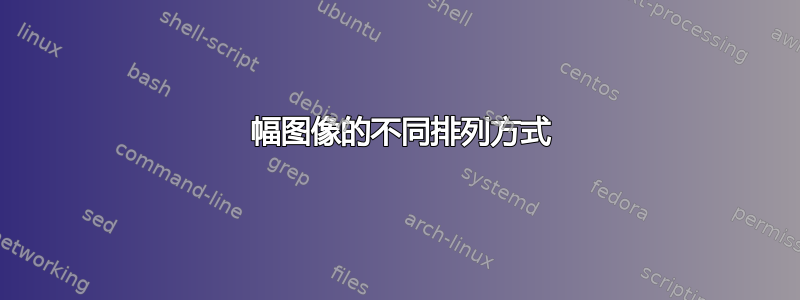
答案1
这是一种涉及堆叠和缩放的方法。
\documentclass{article}
\usepackage{graphicx,scalerel,stackengine}
\setstackEOL{\\}
\begin{document}
\begin{figure}[ht]
\centering
\setstackgap{S}{0pt}% inter-image gap
\setstackgap{L}{52pt}% baselineskip for (b) (c) (d)
\scalerel{\includegraphics[height=10pt]{example-image}}% 10pt placeholder
{\hspace{30pt}%
\Shortstack{%
\includegraphics[width=70pt]{example-image-a}\\
\includegraphics[width=70pt]{example-image-b}\\
\includegraphics[width=70pt]{example-image-c}% 70pt actual width
}%
}
\raisebox{23pt}{\Longstack{(b)\\(c)\\(d)}}\\
(a)\hspace{118pt}
\caption{My figure of a) fruit, b) bananas, c) kiwis, and d) pomegranates}
\end{figure}
\end{document}
答案2
这是使用方框进行经典 TeX 操作的任务。您只需要知道\hbox、\vbox和TeX 基元的行为:\vcenter\vtop
\hbox to\hsize{%
\vtop{\vbox{\hbox{<picture a in .7\hsize width>}}%
\medskip\hbox to.7\hsize{\hss(a)\hss}}\hss
\vbox to <height of big picture a>{
\hbox{$\vcenter{\hbox{<picture b>}}$\quad(b)}\vss
\hbox{$\vcenter{\hbox{<picture c>}}$\quad(c)}\vss
\hbox{$\vcenter{\hbox{<picture d>}}$\quad(d)}
\kern0pt
}%
}




